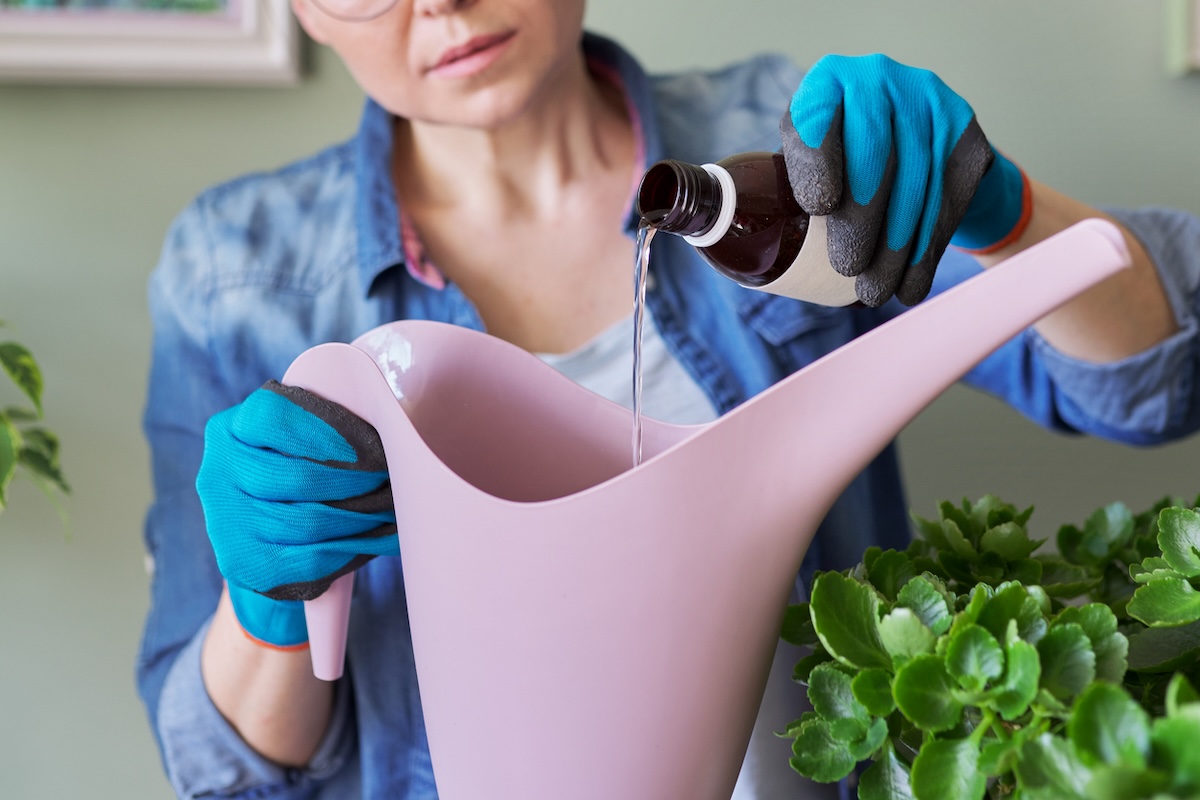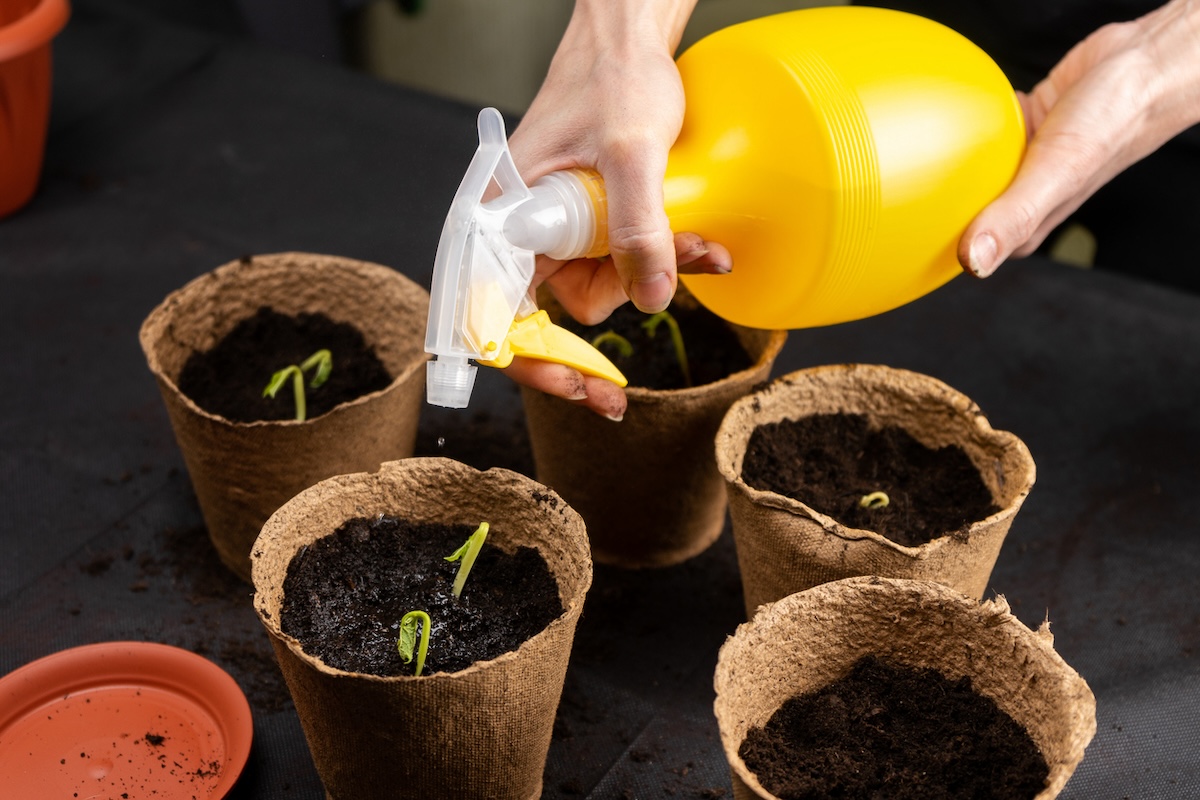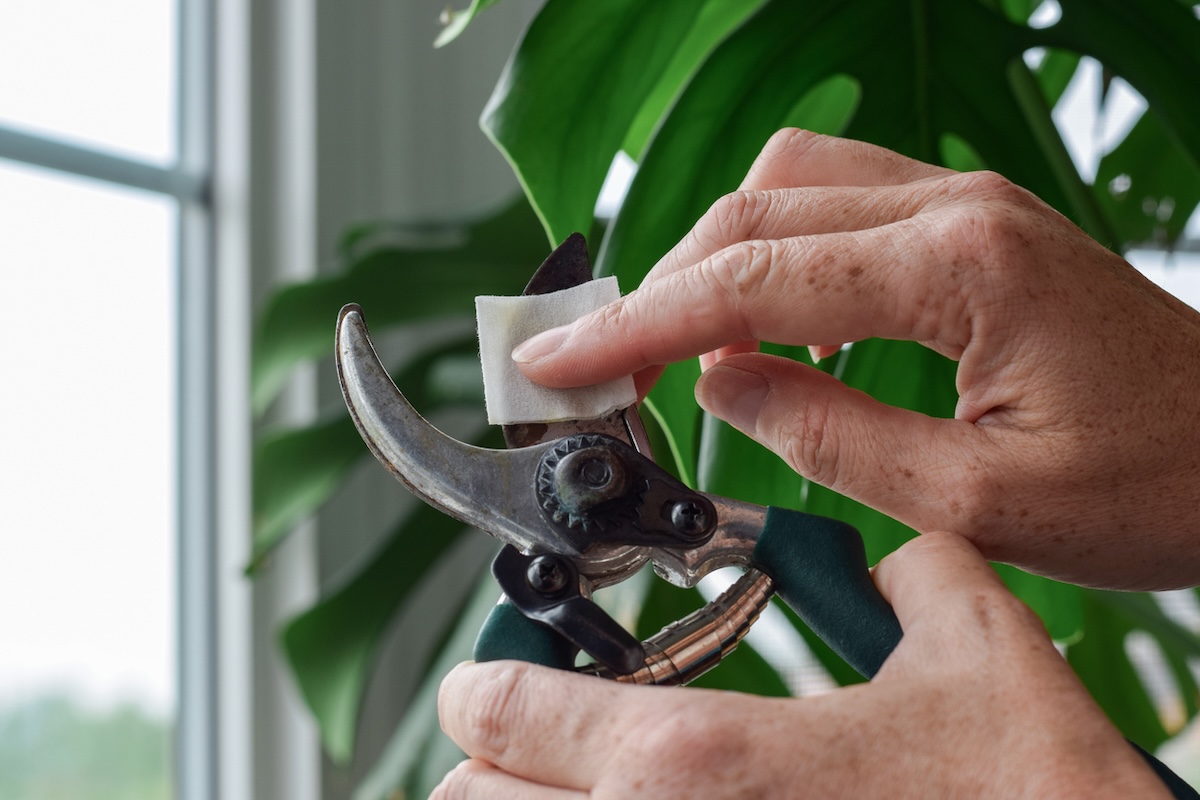

We may earn revenue from the products available on this page and participate in affiliate programs. Learn More ›
Although articles on hydrogen peroxide for plants abound, it actually has few proven gardening-related uses. As Jeff Gillman, Ph.D., author of The Truth About Garden Remedies and director of the UNC Charlotte Botanical Gardens notes, “In my limited tests and experience, it is absolutely useless for controlling disease.”
Gillman says that hydrogen peroxide “is a surface sterilant, and for that purpose, it works well. But it breaks down quickly when it is applied, so it isn’t going to provide lasting disease control. It’s just water with an extra oxygen atom, so it’s useless as a fertilizer and it isn’t something that could provide reliable insect control.”
Benefits of Using Hydrogen Peroxide for Plants
Because this particular chemical compound kills good microbes as well as bad, you’ll probably want to avoid applying it to soil in most cases. So, as far as secret ingredients for gardening go, peroxide for plants may seem pretty much a bust! But the household staple does have a few uses for home gardeners.
It sanitizes the surfaces of tools and produce.
As Gillman notes, peroxide is a surface sterilant. The same qualities that equip it to clean cuts and scrapes also enable it to clean bacteria and fungi from the blades of garden tools, as well as planting trays. It can even clean the outside surfaces of produce. Keep in mind, though, that a University of California study found that peroxide did not kill fire blight bacteria as well as other disinfectants (such as bleach, Pine Sol, and Lysol) did.
It enhances seed germination by eliminating fungi.
A North Carolina State University study by Robert M. Jetton and W. Andrew Whittier determined that seeds of Atlantic white cedar soaked in hydrogen peroxide for 1 hour before their sowing germinated at a much higher rate than seeds not soaked or soaked in other sterilizing solutions. The authors of the study mentioned that “soaking seeds in hydrogen peroxide is known to be effective for sterilizing seed coats infected with saprophytic and pathogenic fungi.” Of course, only types of seeds that frequently are infected with fungi would require such a “bath.”
It cleans the surface of seed-starting mix.
If white mold appears atop your seed-starting mix while you are in the process of starting seeds, you can spray the surface with a water/peroxide solution to eliminate the fuzzy interloper. Also, should your seedlings begin keeling over due to damping-off disease, you may want to mist their soil mix with a diluted hydrogen peroxide spray for plants. This can help contain the carnage by controlling the fungi that cause it. Seed-starting mixes often are sanitized anyway; if so, you may not be killing any good bacteria in the process.
It adds oxygen to flooded hypoxic soil.
Although hydrogen peroxide adds no nutrients to the soil, making it useless for typical fertilization, it is sometimes used in oxygen fertilization. A University of Florida article notes that the result of saltwater flooding of plants often is that “air in the soil is replaced by saline water.” As a result, not enough oxygen reaches the plant roots, and the plant cannot support the “aerobic respiration of the roots.” The authors note that adding even a small amount of hydrogen peroxide when irrigating those plants might be enough to save them.

Applying Hydrogen Peroxide to Soil
To mix up a hydrogen peroxide solution for plants vulnerable to damping off, combine 1 tablespoon of peroxide with 1 quart of water. (Use the typical 3 percent peroxide from your drugstore as your garden hydrogen peroxide.) For combating mold, mix 4 tablespoons of peroxide per pint of water.
When watering plants with hydrogen peroxide, either mist the surface of the seed-starting mix with your solution or water the container from the bottom with that solution until it dampens the surface. Just keep in mind that the effects of peroxide don’t last long. So, for seedlings especially prone to damping off, you might need to apply new treatments on a regular basis.
To add oxygen to hypoxic soil, the University of Florida recommends that you use only 1 teaspoon of peroxide per gallon of water whenever you water affected plants.
Avoid Spraying Hydrogen Peroxide on Foliage and Roots
As for applying hydrogen peroxide on plants, it’s best to avoid that. As Nick Goltz, director of the University of Connecticut Plant Diagnostic Laboratory notes, “Hydrogen peroxide does sterilize surfaces and can reduce bacteria and some fungi. But the rapid reaction that gives hydrogen peroxide its sterilizing properties occurs almost immediately after coming in contact with other compounds. This does not permit hydrogen peroxide to move throughout a plant.”
This means that its use will not affect most pathogens (organisms that cause diseases) if the fungi or bacteria are in a plant’s tissues rather than on its exterior. “Applying hydrogen peroxide excessively or improperly may even make plant health issues worse by drying surfaces and killing beneficial microbes,” says Goltz.
You’ll also want to avoid using undiluted hydrogen peroxide for root rot, as is sometimes recommended. A study done on moth orchids proved that even a 3-minute exposure to that compound could damage roots, and the peroxide did little to subdue algae populations around the roots.

Disinfecting Garden Tools With Hydrogen Peroxide
To disinfect garden tools and supplies such as pruning shears and planting flats, soak them in a solution of 1 part 3 percent hydrogen peroxide to 4 parts water.
For cleaning produce, Seattle Times columnist Teresa Graedon recommends that you use a food-grade form of 3 percent peroxide rather than the typical drugstore product. Add only about ¼ to ½ cup of it to a gallon of water, and soak produce for 10 to 20 minutes, being sure to rinse it with clean water afterward.
Although drugstore peroxide should work well enough for hobby gardeners, there also are stronger types of gardening hydrogen peroxide available for professional growers. In those, the peroxide often is mixed with other ingredients and mainly used for greenhouse sanitation.
